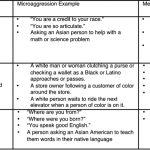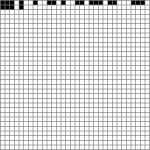2015
In this riposte to Herbrechter, John Bruni suggests that the pivot from humanism to posthumanism is not without peril. Thus, Bruni enjoins readers, even as the posthuman discourse incorporates them into its post-anthropocentric milieu, to “watch the critters” as the machine of capitalism trudges ever onward.
2014
The authors discuss their effort to raise critical awareness about microaggressive racist behavior with Mimesis, an interactive game set in an underwater environment where players become sea creatures, and where they feel the social force of microaggression regardless of the their race or ethnicity.
At the Frankfurt Book Fair, Ed Finn and his team attempted to "write, edit, and publish a book in three days." In this essay, Finn explains the process, outcomes, and future considerations of that collaborative experiment in writing, reading, and publishing in parallel and as performance, in the same room at the same time, as he attempts to answer the question, "What is the future of publishing?"
Vanwesenbeeck situates Mark Taylor’s recent Rewiring the Real, within a growing body of critical literature (which also includes John McClure’s Partial Faiths and Amy Hungerford’s Postmodern Belief) that regards religion as key to a robust account of postmodern culture—and for Taylor, in particular, as key to appreciating the novels of William Gaddis, Richard Powers, Mark Danielewski, and Don DeLillo
Crossing the tools of fluid dynamics with those of literary criticism, Gwen Le Cor casts a new light on contemporary writing in new media. Unlike first generation, "classical" hypertexts that were non-linear in the sense of using linked textual elements, Le Cor sees Strickland and Lawson Jaramillo's poem, slippingglimpse, as a more "contemporary" instance of nonlinear writing that can be viewed (literally) as a "complex, nonlinear turbulent system."
In “…without shame or concern for etymology,” Hanjo Berressem discusses Pynchon's Bleeding Edge in the context of post-9/11 fiction. In contrast to narratives of post-traumatic melancholy, Berressem argues that Bleeding Edge is a “Jeremiad about the fall and the sins of America.” The result is an essay that makes a powerful case for Pynchon as a prophetic, if brutal, witness to American society turning towards security and control in the shadow of tragedy.
In PAIN.TXT, Alan Sondheim and Sandy Baldwin explore the limitations of expression at the borders of human sensation. Derived from a dialog between Sondheim and Baldwin on extreme pain, this essay considers how one signifies intensity and another attempts to interpret that intensity, and the challenges this process poses for affect, imagination, and ultimately intersubjectivity. In keeping with the content of this piece, the two preserve the dialog format, recreating for readers a discourse on p...
In this ambitious piece, which was initially presented at the 2013 Paris meeting of the Electronic Literature Organization, John Barber examines the role of sound in born digital literary works. Identifying, initially, the rich history of sound art and radio drama, Barber goes on to probe the untapped potential of digital audio as a field for future development. Anticipating John Cayley's 2018 essays on Aurature in electronic literature, Barber in this essay sees sound moving into the foreground of a transformed literary experience, rather than just augmenting text based literary acts.
In this essay, Janez Strehovec explores the literary from the “nomadic cockpit” everyday life in the 21st Century. More than merely being cocooned by screens, Strehovec’s metaphor describes the way in which our travel through the environment is layered with navigational data, environmental surveillance, communication systems, and tied into a dynamic feedback loop. From this vantage point, Strehovec considers a number of works of digital art and electronic literature that are written precisely to be read in motion, to explore the sensations of life in the nomadic cockpit.
In “One + One = Zero,” Marjorie C. Luesebrink discusses “fleeting” messages and their implications for electronic literature. Beginning with a discussion of the popular social media app, Snapchat, Luesebrink considers a series of works of electronic literature that employ tropes of vanishing and inaccessibility to represent forgetfulness, limited perception, and the challenges posed by dynamic environments for contemporary readers. After tracing a path through two decades of digital practice, Luesebrink points to a future in which the vanishing text will continue to be a relevant site for literary innovation.
Commenting on the high price of long term literary collaboration (and the brevity of most funding in the Humanities), Samantha Gorman asks if it's necessary for arts practitioners today to create commercial start-ups. Can scholars and Digital Language Arts entrepreneurs find a way to bring literary work into "hybrid communities" and "outreach"?
How does the electronic literature community continue to develop? Amaranth Borsuk looks towards the print literature community, and suggests that we adopt a number of its most successful practices.
One of several early career participants at the Electronic Literature Organization's Summer 2012 "Futures" panel, Claire Donato comes down on the side of non-commercial, non-entrepreneurial, educational approaches to an emerging digital literary practice.
For Patrick LeMieux, the future of electronic literature is not before us, and instead entails an investigation of the past--of the unknowable territories we collaborate with through e-lit.
What are we to make of current calls for "practice based" research in the Digital Humanities and e-lit fields? What about "art as research"? Stephanie Boluk sounds a caution concerning the ways that literary studies are being worked into the "instrumentalization and corporatization of the university system."
In his video-poem "Reading the Wind," Dave (Jhave) Johnston identifies the current environment for electronic literature, and in doing so, claims the impossibility of knowing its future.
The practice of Electronic Literature has long raised questions about literary form, literary content, the author, the reader, the moment of publication, and the artifact itself. The companion to the lifecycle of the work in its ecosystem, of course, is the editorial vision itself. In this essay, Sandy Baldwin and Tiffany Zerby call for editors and publishers of works on and about e-lit to become active participants in the process of creating the entire work and in creating the field around wo...
Giorgio Agamben has identified the “State of Exception” as the emergent principle of governance for the 21st Century. Parallel to this crisis in politics, there is the increasing currency of the term emergence in literary criticism, media theory, and cultural studies to describe the general state of change. In this paper, Heckman considers electronic literature in the "state of emergency," as both a laboratory for formal innovation and a site of critique. Specifically, this paper takes into account the relationship between literacy, law, literature and criticism through a reading of Sandy Baldwin’s New Word Order, a work that reimagines poetry in the context of the first-person shooter game.
2013
Chris Funkhouser and Andrew Klobucar situate the poetry anthologized in the recent collection "Gnoetry Daily, Vol. 1: a collection of poetry written interactively with computers" within a long genealogy of computer aided writing in order to illustrate how that genealogy continues to be both aesthetically generative and socially significant.
Shoba Ghosh contends that in The Book of Portraiture, Steve Tomasula’s exploration of how artists in specific historic moments narrativize uncertainty in the constitution of the subject illuminates the conceptual framework that produces a number of significant global dynamics. According to Ghosh, Tomasula demonstrates that the contemporary subject’s body has become “no more than an agglomeration of brands” that can be “fashioned in the image of desire,” though at the same time, “desire also seeks to deterritorialize itself.” For Ghosh, Tomasula’s aesthetic treatment of that subject-defining tension ultimately assists in “track[ing] the loop by which Empire and Terrorism, State and Extremism, America and its 'other' produce each other simultaneously.”





